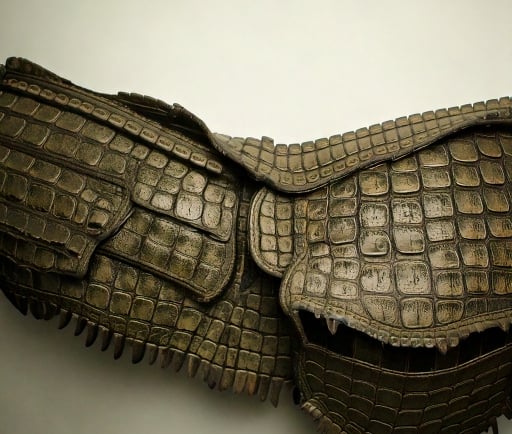The Art and Symbolism of Ancient Crocodile Skin Armor in Roman Egypt


Introduction to Crocodile Skin Armor
During the Severan Dynasty in Roman Egypt, the use of exotic materials became a prominent design choice, particularly in armor. Among these unique armors, the crocodile skin armor stands out not just for its aesthetic appeal but also for its rich symbolism. This distinctive armor represented the profound connection to Egyptian wildlife and the reverence for the crocodile as a powerful emblem of strength and protection.
The Significance of Crocodile Skin
The crocodile held a significant place in ancient Egyptian culture, often associated with the goddess Sobek, who was revered as a deity of the Nile. The use of crocodile skin in armor was not merely functional; it served as a statement of power and status. By adorning themselves with this exotic material, Roman officials and soldiers made a clear declaration of their authority and respect for the revered symbols of the land they governed.
Craftsmanship and Cultural Influence
Creating armor from crocodile skin required exceptional craftsmanship, as the artisans of the time had to skillfully treat and prepare the material for use in battle. The artwork displayed on the armor often depicted religious symbols and motifs that reflected the rich cultural tapestry of Roman Egypt. As such, these armors did not only provide protection but also conveyed deep cultural narratives, blending the Roman military tradition with local Egyptian customs.
In conclusion, the ancient crocodile skin armor from Roman Egypt during the Severan Dynasty is an extraordinary testament to the region's craftsmanship and cultural significance. This remarkable artifact acts as a reminder of the interplay between art, power, and wildlife, underlining the importance of these elements in ancient societies.
